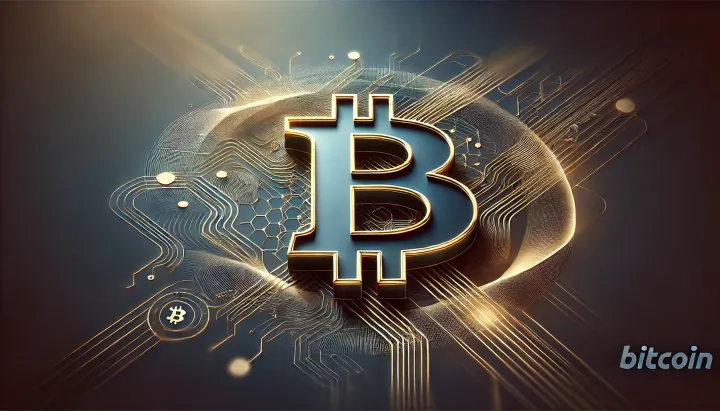Bitcoin-Enhanced FIRE: Compressing Time-to-Retirement
The April 24, 2025 episode of the Robin Seyr Podcast features Trey Sellers outlining how a modest Bitcoin allocation sharpens FIRE strategies by capitalizing on volatility and fixed-supply upside.

- My 'briefing notes' summarize the content of podcast episodes; they do not reflect my own views.
- They contain (1) a summary of podcast content, (2) potential information gaps, and (3) some speculative views on wider Bitcoin implications.
- Pay attention to broadcast dates (I often summarize older episodes)
- Some episodes I summarize may be sponsored: don't trust, verify, if the information you are looking for is to be used for decision-making.
Summary
The April 24, 2025 episode of the Robin Seyr Podcast features Trey Sellers outlining how a modest Bitcoin allocation sharpens FIRE strategies by capitalizing on volatility and fixed-supply upside. Sellers compares index-fund returns with Bitcoin’s historical growth and shows why fiduciaries now treat zero exposure as negligent. His framework couples disciplined dollar-cost averaging with new withdrawal-rate guardrails to manage early-retirement risk.
Take-Home Messages
- Prudent Allocation: A 0.1 BTC starter position materially advances financial-independence timelines at modest risk.
- Automation Beats Emotion: Split purchases between an immediate buy and scheduled DCA to avoid fear-driven delays.
- Volatility Planning: Model withdrawals at 6 %–8 % and value BTC at the 200-week MA to survive deep drawdowns.
- Custody First: Collaborative-custody vaults integrate security, estate planning, and rapid onboarding.
- Sovereign Hash Race: Early retail savers front-run potential supply shocks as nation states scale mining.
Overview
Trey Sellers begins by linking every spike in Unchained’s client activity to sharp Bitcoin price moves, arguing that volatility itself fuels adoption. He asserts that fiduciaries who still hold zero Bitcoin now violate basic duty of care. Institutional interest, he observes, mirrors retail FOMO rather than replacing it.
He then fuses FIRE principles—frugality, intentional saving, and passive index exposure—with Bitcoin’s asymmetric upside, demonstrating that even 0.1 BTC can shave years off the “work-until” date. Index returns average 7 % nominal, but Bitcoin’s compounded growth, even when haircut to 14 %, reshapes savings math. The key is sizing positions to tolerate 80 % drawdowns without panic.
Behavioral hurdles dominate the next segment: Sellers advises clients to “buy half now, DCA the rest,” ensuring instant exposure while neutralizing regret if prices fall. He highlights family-office advisers who ask the same basic questions retail investors raise, proving that wealth does not immunize against emotion. Collaborative custody, he adds, reduces later friction as balances swell.
Finally, he forecasts a sovereign mining race already led by Russia and quietly explored by the United States. Such moves could tighten near-term supply and politicize hash-rate geography. Early adopters, he concludes, position themselves ahead of inevitable state-level demand.
Stakeholder Perspectives
- Retail FIRE Savers: Need clear rules for blending Bitcoin with index funds.
- Wealth Advisers: Seek defensible benchmarks to move clients off zero exposure.
- Regulators: Monitor fiduciary compliance as Bitcoin becomes a mainstream asset.
- Energy-Sector Miners: Anticipate strategic partnerships with sovereign entities.
- Family-Office Managers: Require emotion-aware frameworks to guide ultra-high-net-worth allocations.
Implications and Future Outlook
Regulatory clarity and ETF penetration will push planning software to include Bitcoin assumptions by default, making zero-allocation portfolios increasingly indefensible. Advisory firms that pre-build custody pipelines will capture onboarding surges during future price swings. [note - see my BlackRock research team summary to see why the recommend 1-2% allocation for highly risk-averse investors and much higher for more typical risk-neutral or -seeking investors].
Nation-state mining and treasury accumulation threaten to constrict liquid supply, amplifying sensitivity to fresh demand. Hash-rate centralization risks could spur diplomatic jockeying over energy assets and data-center locations. Policymakers must balance energy security with the economic upside of domestic mining.
As fixed-supply money replaces credit-driven expansion, real productivity may rise and shorten average career lengths. Planning frameworks must therefore shift from static withdrawal rates to dynamic bands tied to macro conditions. Education programs that merge Bitcoin literacy with behavioral-finance tools will be essential for informed household decisions.
Some Key Information Gaps
- How can fiduciaries benchmark the minimum prudent Bitcoin allocation for diversified portfolios? Establishing a defensible baseline will guide advisory standards and protect client outcomes.
- Which portfolio hedges best mitigate first-year sequence-of-withdrawal risk with Bitcoin? Identifying robust buffers safeguards early retirees and informs retirement-plan regulation.
- How will sovereign mining alter global hash-rate distribution and network security? Mapping these shifts aids energy policy, national security planning, and geopolitical risk assessment.
- Which behavioral-finance nudges reduce FOMO-driven purchase errors among high-net-worth clients? Effective interventions stabilize large capital flows and enhance consumer protection.
- How does Bitcoin’s fixed supply alter optimal stock-bond-Bitcoin mixes for FIRE adherents? A revised allocation model affects millions pursuing early retirement and guides interdisciplinary research.
Broader Implications for Bitcoin
Monetary Sovereignty Reset
Bitcoin’s emergence as a strategic reserve asset pressures central banks to rethink fiat-only backstops. Widespread adoption could push governments toward hybrid reserve strategies blending Bitcoin with traditional assets. This shift would redraw global power dynamics anchored in monetary issuance.
Behavioral-Finance Innovation
Volatility-management tools developed for Bitcoin-FIRE portfolios can spill over into mainstream retirement planning. By quantifying sequence-of-withdrawal risk and emotion-driven mistakes, the field may craft new default settings for 401(k)s and robo-advisers. Such advances raise financial literacy across asset classes.
Energy-Market Realignment
Sovereign mining demand links national energy policy directly to digital-asset security. Countries rich in stranded or renewable power may monetize excess capacity through mining, accelerating infrastructure upgrades. Cross-border energy cooperation could replace oil cartel politics with hash-rate alliances.



Comments ()